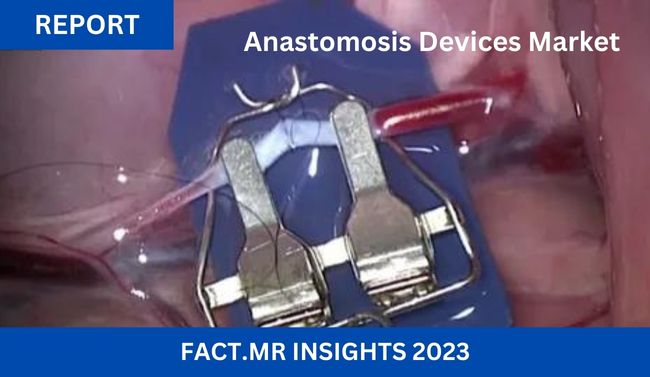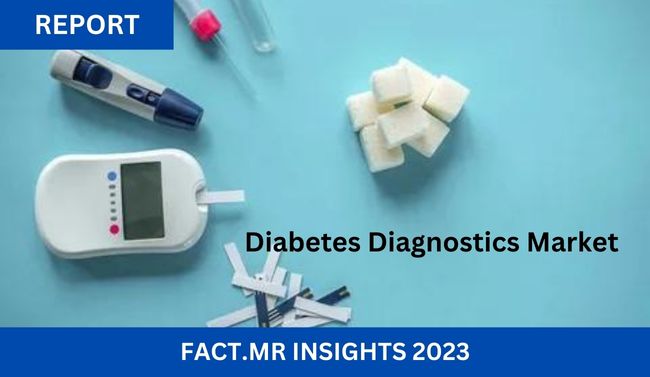The global amniotic membrane market is predicted to be worth US$ 11.12 billion in 2032 and is expected to grow at a CAGR of 14% from 2022 to 2032. The increasing number of accidents and the growing knowledge of the benefits provided by the amniotic membrane are driving market growth.
Get Free Sample Copy of This Report-https://www.factmr.com/connectus/sample?flag=S&rep_id=7125
The amniotic membrane market is a vital segment of the healthcare industry, offering a versatile biological material with a wide range of medical applications. The amniotic membrane, derived from the placenta, is rich in essential proteins, growth factors, and other bioactive compounds that make it valuable in various medical procedures. It is widely used in regenerative medicine, wound care, ophthalmology, and gynecology, among other fields. As medical science advances, the applications and demand for amniotic membrane products continue to grow.
Amniotic Membrane Market Dynamics
The dynamics of the amniotic membrane market are shaped by several key factors:
- Regenerative Medicine: Amniotic membrane products are increasingly utilized in regenerative medicine for their ability to support tissue repair and regeneration. They are used in the treatment of wounds, burns, and orthopedic injuries.
- Ophthalmology: Ophthalmologists use amniotic membrane grafts in procedures to treat conditions like corneal ulcers, pterygium, and dry eye syndrome. The unique properties of amniotic membrane aid in ocular surface reconstruction and healing.
- Gynecology: In gynecological procedures, amniotic membrane products are employed for their regenerative and anti-inflammatory properties. They are used in cases of vaginal atrophy, pelvic organ prolapse, and more.
- Wound Care: Amniotic membrane dressings are utilized in wound care for their ability to accelerate wound healing and reduce scarring. They are particularly beneficial in chronic wound management.
- Research and Development: Ongoing research and development efforts are expanding the potential applications of amniotic membrane products. Innovations in processing and preservation methods are enhancing product quality.
Key Companies Profiled In This Report
- Alliqua BioMedical Inc.
- Amnio Technology LLC
- Applied Biologics LLC
- Human Regenerative Technologies LLC
- DermaSciences
- Katena Products Inc.
- MiMedx Group Inc.
- Skye Biologics Inc.
- Amniox Medical Inc.
- Integra LifeSciences Corporation
Amniotic Membrane Market Value Chain
The amniotic membrane market value chain involves various stakeholders:
- Donors: Donors provide the placental tissue from which amniotic membrane products are derived. Donor selection and consent are crucial ethical considerations.
- Collection and Processing Facilities: These facilities process the placental tissue to extract and prepare amniotic membrane products, ensuring compliance with regulatory standards.
- Manufacturers: Manufacturers produce various amniotic membrane-based medical products, including grafts, dressings, and injectables, for medical applications.
- Healthcare Providers: Healthcare providers, including physicians and surgeons, utilize amniotic membrane products in medical procedures, such as surgeries and wound care.
- Regulatory Authorities: Government agencies regulate the processing and distribution of amniotic membrane products to ensure patient safety and product quality.
- Patients: Patients benefit from amniotic membrane products in various medical treatments, experiencing improved healing, reduced pain, and enhanced quality of life.
Competitive Landscape
Leading players in the global amniotic membrane market employ a variety of strategies to strengthen their global presence and secure a leading position in the industry. Strategies such as partnerships, acquisitions, and collaborations are widely adopted to expand their market footprint. Here are some recent developments among key players:
- Merakris Therapeutics Unveils Dermacyte Matrix (July 2022): Merakris Therapeutics made headlines in July 2022 with the launch of Dermacyte Matrix, an innovative amniotic membrane designed for safeguarding and restoring damaged tissues.
- TissueTech Rebrands as BioTissue, Inc. (February 2022): TissueTech, a well-known player in the clinical application of cryopreserved human birth tissue products for treating chronic wounds, ocular surface disorders, and musculoskeletal conditions, underwent a significant transformation in February 2022. It unveiled a new name and logo, bringing both BioTissue, Inc. and Amniox Medical, Inc. under a unified identity, enhancing its market presence.
- Audax Private Equity Completes Katena Products Sale to Corza Medical (December 2021): In December 2021, Audax Private Equity proudly announced the successful sale of Katena Products to Corza Medical, a GTCR portfolio company. Katena Products is a renowned provider of ophthalmic devices and therapeutics to hospitals, surgical centers, and clinics.
Get Customization on this Report for Specific Research Solutions –https://www.factmr.com/connectus/sample?flag=RC&rep_id=7125
The amniotic membrane market plays a pivotal role in modern healthcare, offering versatile solutions for regenerative medicine, wound care, ophthalmology, and gynecology. While the market faces ethical considerations, regulatory compliance challenges, and the need for standardization, ongoing research and development efforts promise to expand its applications and improve patient outcomes.
About Fact.MR:
Fact.MR is a distinguished market research company renowned for its comprehensive market reports and invaluable business insights. As a prominent player in business intelligence, we delivers deep analysis, uncovering market trends, growth paths, and competitive landscapes. Renowned for its commitment to accuracy and reliability, we empowers businesses with crucial data and strategic recommendations, facilitating informed decision-making and enhancing market positioning. With its unwavering dedication to providing reliable market intelligence, FACT.MR continues to assist companies in navigating dynamic market challenges with confidence and achieving long-term success. With a global presence and a team of experienced analysts, FACT.MR ensures its clients receive actionable insights to capitalize on emerging opportunities and stay ahead in the competitive landscape.
Contact:
US Sales Office
11140 Rockville Pike
Suite 400
Rockville, MD 20852
United States
Tel: +1 (628) 251-1583, +353-1-4434-232
Email: sales@factmr.com




